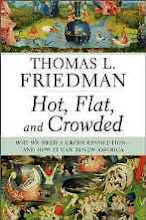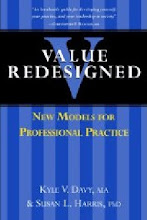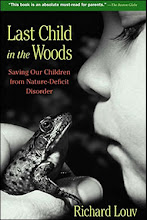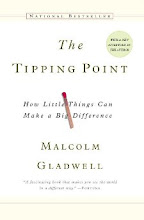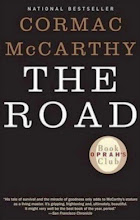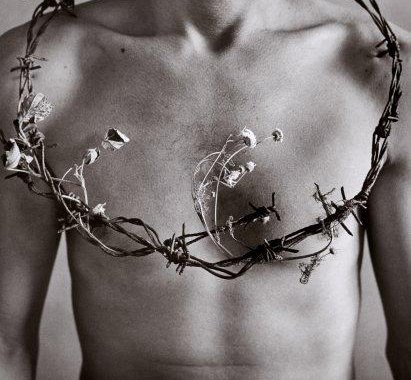
"The face is the mirror of the mind, and eyes without speaking confess the secrets of the heart."
Saint Jerome (374 AD-419 AD)
Each of us is hiding behind a stoic façade a dirty little secret that we pray each day will disappear but never does. It seems to start so innocently with such modesty. It was a part of what was so endearing about the person, a reckless nature of indulgence, the life of the party, the clown whose antics and yarns are the envy of the group. The infallible personality that everyone loves and wants to be in the presence of is what we remember the most. Those distant memories are only fragments of a time of naivety we hold on to like chards of broken glass from a past existence. Gripping the past so tenaciously that the chards we hold cut deep into our flesh. Somewhere along the way the evil took hold, a point time you cannot recall.
Then slowly you realize that the actions have become predictable, a pattern emerges that is only discernable to you by careful scrutiny. A small defect emerges in a once pristine personality. It starts with a familiar story that you have heard more times than you can recall, it’s a trigger, a warning sign of what’s to come. It’s the storm that gathers on the horizon building strength in the hot summer sky threatening the calm still air, threatening the perfect silence of the moment. No one else surrounding you knows the story as well as you, no one can see the shift in posture, the eyes that lose a ever so slight glint of passion, a word falls from the lips haphazardly as it shatters on the floor like a glass alerting you to increase your attentiveness, which only hastens the unavoidable car wreck. A gentle suggestion is ignored, simple prompt is deflected, a not so subtle look is repulsed, while oblivious to your concerns there is an increasing amount of push back, exerting a stubbornness blinded by the desire to continue into the ugly crevasse for reasons unknown. A small turn down a dark path foretells the danger.
The crowd swept up by the spectacle drives the exhibition on to a frenzied pitch, like a mob at the carnival they stare at the freak show empowered by the fact that they aren’t the biggest baboon on display. Individuals that were strangers only hours ago are now life long buddies as you hope for the best. A mob mentality surfaces as the signs of a riot echo against the walls of poor judgment. All you can do is watch disgusted, hurt, embarrassed, sympathetic and angry that it is your responsibility to clear the wreckage, to explain the lack of judgment, to reconcile the image of self abuse. The well worn excuses roll of your tongue as if memorized childhood rhymes as you attempt to recall how many times you have used this exact excuse with the same crowd. After a while you just stop offering excuses because everyone has heard it, everyone knows the pattern and no thin veneer of makeup can disguise the sad reality. You have become the caretaker, the arbitrator, the enabler, the warden; you have become the adult to a child.
Afterwards you sit solemn in the darkness with your head bowed in your hands, wondering why the self destruction is of so little concern, of no importance at all. Why it is such a proudly protected right to abuse themselves without compromise to which they will defend to their death. How can they view your compassion and concern with only the contempt of denying a condemned man the entitlement of his last meal? It’s my life, it’s my body and I can do with it as I please, you have no ownership, no say in this relationship we have create together. My poor decisions only impact me; my unilateral actions are mine to wallow in like a vane teenager peering into a mirror. How dare you ask me to think beyond the moment and remove this cancerous growth that is now so much of who I am?
As the destructive play is repeated over and over throughout the years, the script increases in intensity, the play becomes more violent, the actors know their roles so well that there is no enjoyment like a drone of flies against a screen door. The frequency becomes more prevalent, what was exclusively a weekend premier, is now more often a weekday matinee. Then before you notice it’s not about the audiences any more, there is no need for anyone to watch for the play to continue in the void of emptiness. It becomes a ritual of destruction, an obsessive masturbation which is just as easily preformed solo. In the end we turn a blind eye to the damage being done. It is much easier to clean up the broken glass than it is to stand in front of the bullet. Resentment slowly gnaws at your conscience, poisoning ever simple discussions as you keep the boil buried deep beneath the skin. Like a contagious disease the cancer is passed to you, only your symptoms are anger, pain, isolation, depression which robs you of self respect and compassion. Every so often the sickness of your soul erupts with unbridled violence and venom. You strike out attempting to exorcise the disabling disease which has taken root for years with a single swift and brutal assault of verbal dismembering. The violent eruption of those isolated moments are met which equal fierceness which only alienates and divides. Why do you impose limits to my self destruction? I see no harm in the mutilation, there is little justification to question my motives.
Little by little like the snow pack grinds away the stoutest of granite peaks as your will to resist; your desire to set the course right is tried and worn until you lose the motivation to change the gradual descent into hell. Instead you spend your time crafting cleaver disguises for your dirty little secret. In anger and pain you disconnect driving the chasm of isolation wider and wider, until you can no longer see the other side through the foggy pall of depression. Finally you become the victim, the dying heroine of this tragic play when as Grace Slick would say “the little pills that mother gives you don’t do anything at all.” You pass the time in the fantasy of escape, if only I could have the courage to run, to leave this all behind, to be swept from the ground by a tornado like Dorothy and deposited in another world. Bound by some powerful magnetism you are compelled to ride this hell bound train to its conclusion, the final stop knowing all along it guarantees your own destruction.
Why do so many of us deal with addictive behavior in a close relationship such as a partner or a family member. The numbers are staggering when you decide to count the dirty little secrets hidden in plain sight all around us. Compulsive destructive abuse of drugs, alcohol, gambling or tobacco is everywhere close to us, but yet we tolerate it in the people we care the most about. Slaying the demon is no easy task; it requires placing everything we value at risk in order to succeed and just as easier can equally result in failure and irreparable damage. Instead we become paralyzed, unable to act taking the coward’s way out by ignoring the ugliness and deceit. Tomorrow it will be better, tomorrow things will change, but tomorrow is just a faded dream, a tattered illusion we trick ourselves with while we bleed a little more dignity today.
You will have to excuse me, the play is beginning without notice and once again I need to take my place in support of this American travesty, take my place as the dying heroine destine to be a victim of my own neglect. Where is my anger and resentment? Where is my cloak of depression and despair? The curtains are opening and the dirty little secret is once again on public display. I must hurry, where is my basket of excuses? There is no time the car wreck has begun; the hell bound train is departing. The crowd is jeering knowing today’s self destruction is going to be better than ever. Forgive me I am not allowed to talk to you, it is not allowed. I must hurry hell is waiting for me.
"The only alternative to coexistence is codestruction."
Jawaharlal Nehru (1889-1964)

































